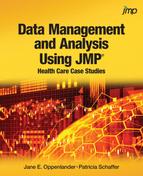Analysis Implications
Analysis of the question that
seeks to assess the opinion of the current state of EBP shows that
only 33% of the nurses viewed EBP favorably. A 95% confidence interval
of [0.27, 0.40] is a range of plausible values for the true proportion
favoring EBP and accounts for the uncertainty associated with estimating
the sample proportion.
The survey represents
the opinions of a minority of the nurses at the hospital since the
response rate was 30%. This survey was voluntary and as such the
data constitute a non-random sample. Random sampling is an assumption
that underlies the confidence interval method. Surveys such as this
are subject to self-selection bias. Nurses who chose to respond to
the survey may have been more interested in EBP or hold stronger opinions
about the success of EBP to date. This means that the results may
not be representative of the population of registered nurses. Conclusions
drawn must be tempered by the 30% response rate, non-random sampling
and the potential self-selection bias.
The confidence interval
gives the Nursing Research and Evidence-based Practice Council an
initial understanding of the perception of EBP among the registered
nurses. Such a preliminary assessment can help them begin to consider
ways in which the perception of EBP can be improved. This may include
developing training and mentoring programs or revising work practices.
Analysis of the other survey questions will provide a more complete
understanding of the nurses’ opinion of the EBP implementation.
As a next step, it would be important to understand if the perception
of EBP differs based on demographic factors such as a nurse’s
organizational level or educational level. As the survey analysis
progresses, missing data pattern analysis should be conducted to gain
insight into survey nonresponse.
Last updated: October 12, 2017
..................Content has been hidden....................
You can't read the all page of ebook, please click here login for view all page.
